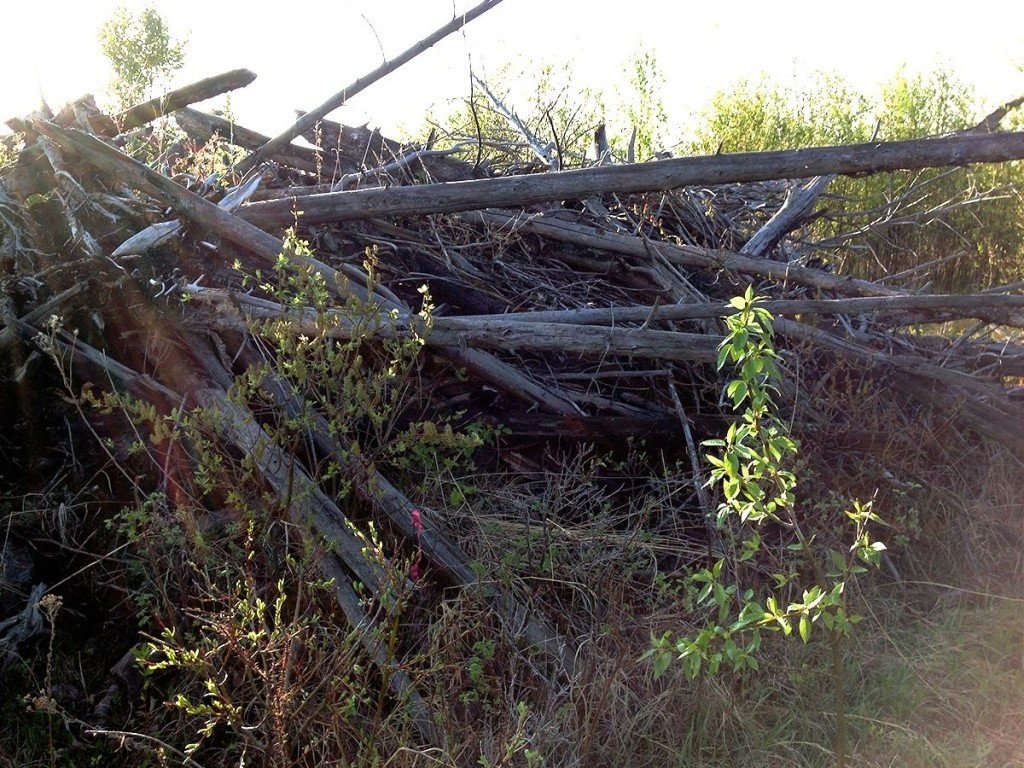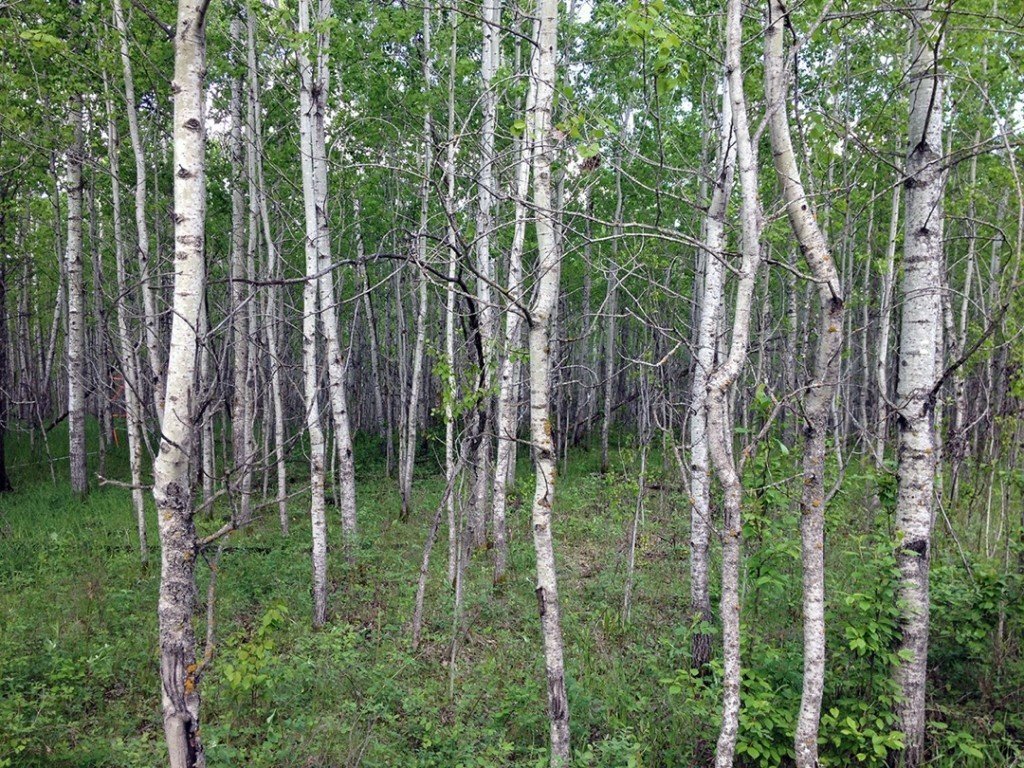If you missed it, catch up on Part 1 of Cody Pytlak’s series here!
Part 2
Spring shifts for ABMI field technicians are a time to wake up early, stumble through forests and bogs, and enjoy the sunrise as we listen to birds and record data. While birding feels like the focus of the spring days, there is lots of important information to collect.
Coring for soil, which is theoretically straightforward, can be frustrating dependent on the site. When collecting from bogs and fens, for example, the combination of high water levels and a soft organic layer make for a sloppy mess that often slides out of the corer before we can take it out of the ground. Conversely, farm fields and pastures can be just as tricky as the compacted soil makes it hard to core deep enough to get the correct amount of the organic and mineral layers without having to go beyond the minimum four cores for each of the four soil points in a site.
Once we successfully collect all the necessary samples from a site, we store them in cloth bags in a cooler or fridge to be sent to the Royal Alberta Museum (RAM) for future mite extraction. This mineral layer will also be tested for organic carbon content. The soil must be kept cool to ensure the mites stay alive, which allows RAM taxonomists to extract them and identify the species present, including those new to Alberta, Canada, and even sometimes new to science! As mentioned in Part 1, shipping the samples through Greyhound or Purolator is an entertaining process: the reactions of courier employees range from intrigue to mortification when I explain that I’m sending bags of soil, full of tiny insects, to the RAM for biodiversity research.
Another of the spring protocols is recording down woody material along four 25-metre transects. The protocol is used to measure the debris and woody litter along the ground and can also be used for determining fire potential in sites. It can be one of the quickest protocols to complete, however, as I have learned throughout the spring, it’s not uncommon to run into obstacles.
In my case, one obstacle was a brush pile of cut down trees and shrubs placed conveniently along the transect line. With determination, some cursing, and the ability to balance on some shaky and decayed logs, I was able to count everything I needed and move on with my day with nothing more than a few scrapes on my hands and shins.
The final spring protocol, which is usually done by both partners at the end of the day, is tree measurements in a total of 12 plots for each site. Dependent on the site, the tree protocol can breeze by or take hours. Fortunately, many of my spring sites were in fields and pastures where trees are non-existent and it makes for easy days. With three nested plots per quadrant, tree species above a specific diameter must be recorded for species, height, DBH (diameter breast height), and its position within the forest canopy. Determining tree heights, especially for anything larger than two or three metres turned out to be easier than I was led to believe in school!
To measure the height, we place a puck-like electronic receiver onto a tree, and using the hypsometer we fire a signal at the receiver, and then to the top of the tree. The hypsometer takes care of the math, which I am very thankful for, and tell us the height. It becomes fun to guess how tall some trees are, especially the large ones, and seeing how close (or far) our estimates were. After the trees in the site are measured, field work is done for the day, but the work isn’t over yet. When we arrive back at camp, Rianne and I go through the data on our electronic tablets to ensure all the information is complete and accurate, and then make multiple back-ups for safety.
When the work day is complete, the rest of our time is left to be spent however we would like. For me this is a chance to visit the tiny pioneer museums or historical landmarks that can be found in most towns in northwest Alberta. This has become a great way for me to learn about Alberta’s history during my summer and appreciate the communities that make up the northwest. For others at ABMI, the free time after work days can be used to fish in the many rivers and lakes found scattered about, or to watch for birds or waterfowl in forests and wetlands. And for two of my co-workers, Jesse and Jeanette, one evening in Peace River was spent finding CDs to add to their 90s collection, which provided a soundtrack for all of us in the trailer that week.
At the time of writing, with the spring shifts now finished and the summer shifts halfway done, I look forward to gaining further field experience, seeing more areas throughout the northwest, while also enjoying time off between shifts. For my co-workers and I, the days off have been days spent camping in Jasper, or provincial parks, at a music festival, and also enjoying Canada Day celebrations in Grande Prairie. Certainly this job has been a great opportunity to quickly become acquainted with the province and make friends who have come from all over the country to work in Alberta. And it is a fantastic feeling knowing that I still have plenty of time left to see more of the province, learn more about the huge array of biodiversity within it, and create more memories with new friends.
Written by Cody Pytlak. Photo credit: Cody Pytlak.



